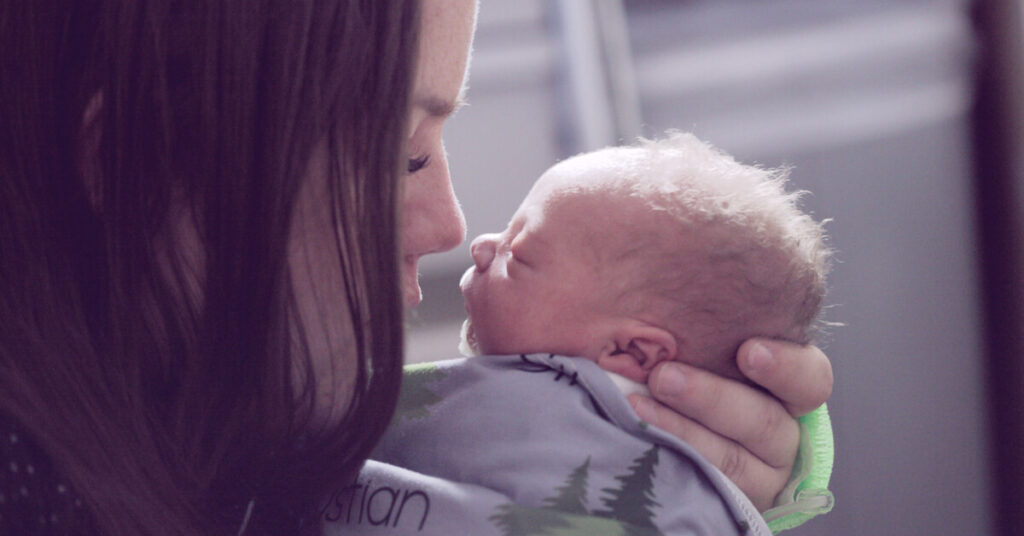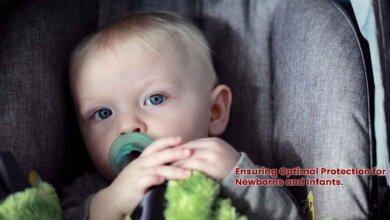Baby walker activity center
Exploring the Benefits and Precautions of Baby Walker Activity Centers.

Introduction to Baby Walker Activity Centers
Definition and Purpose of Baby Walker Activity Centers
Baby walker activity centers are interactive baby apparatuses designed to support infants in their exploratory journey of walking and promote their physical and cognitive development. Infant Walker Play Center typically consists of a suspended seat surrounded by a frame with attached toys and activities.
Evolution of Baby Walker Activity Centers
Over the years, baby walker activity centers have undergone significant transformation to cater to the changing needs and preferences of parents and babies. Initially, they were simple structures without many bells and whistles. However, as research and design advancements emerged, manufacturers started integrating various developmental features into these centers.
Popular Types and Designs
Today, there is a wide range of baby walker activity centers available in the market, each offering unique designs and functionalities. Some models incorporate rotating seats, adjustable heights, and versatile toys, while others focus on lightweight and portable designs. Parents can choose from a plethora of options that suit their individual preferences and their baby’s developmental needs.

The Anatomy of a Baby Walker Activity Center
Key Components and Features
Baby walker activity centers are typically composed of a sturdy frame, a comfortable seat, and an array of interactive toys and activities. The frame provides stability and support, ensuring that babies can safely maneuver within the center. The seat is designed to keep the baby secured and comfortable during playtime, while the toys and activities encourage engagement and stimulation.
Safety Considerations
Sturdy Construction and Materials
Choosing a baby walker activity center made from high-quality materials and with a robust construction is essential for ensuring longevity and safety. Look for centers with reinforced frames and reliable locking mechanisms.
Secure Seat and Harness System
To prevent any mishaps, it is crucial to select a center with a secure seat and a reliable harness system that keeps the baby in place. A well-designed harness will prevent the baby from falling or slipping out of the center.
Height Adjustment Mechanisms
Opting for a center with adjustable height settings allows customization to suit the baby’s growth and development. As the baby grows, the center can adapt accordingly, providing optimal support and engagement.
Brake Systems
Some baby walker activity centers feature brake systems to prevent accidental movement, providing extra safety when needed. These brakes can be engaged when the baby is stationary or out of the center.
Safety Labels and Certifications
Choose a baby walker activity center that meets or exceeds safety standards and carries certification from recognized organizations, such as the Juvenile Products Manufacturers Association (JPMA) or the American Society for Testing and Materials (ASTM).
Developmental Benefits
Enhancing Motor Skills
Encouraging Walking and Movement
Baby walker activity centers can play a vital role in motivating babies to take their first steps. The supportive structure and engaging activities in these centers promote the development of gross motor skills and the exploration of walking.
Strength and Balance Development
Using a baby walker activity center allows babies to strengthen their leg muscles and improve balance as they try to move around and maintain stability. This physical activity contributes to overall motor skill enhancement.
Hand-eye Coordination Improvement
Interacting with the toys and activities within a baby walker activity center helps sharpen the baby’s hand-eye coordination. As they reach, grasp, and manipulate various objects, their coordination and dexterity improve.
Cognitive Stimulation
Introduction to Shapes, Colors, and Textures
The toys and activities in baby walker activity centers often feature vibrant colors, diverse shapes, and different textures. These sensory stimuli help babies recognize and differentiate between various visual and textural elements, promoting early cognitive development.
Cause-and-Effect Learning
Many baby walker activity centers incorporate interactive elements that respond to the baby’s actions. Through pressing buttons, turning knobs, or pulling levers, babies learn about cause-and-effect relationships, enhancing their cognitive abilities.
Problem-solving Skills
Engaging with the puzzles, gears, and other interactive elements in baby walker activity centers fosters problem-solving skills in babies. These activities encourage them to think critically, experiment with different solutions, and develop their cognitive flexibility.
Emotional and Social Development
Boosting Confidence and Independence
As babies explore and successfully maneuver within a baby walker activity center, they gain a sense of accomplishment and boost their self-confidence. This newfound independence contributes to their emotional development.
Encouraging Social Interaction
Baby walker activity centers often create opportunities for social interaction. Babies can engage with their caregivers, siblings, or other babies during playtime in the center. This interaction enhances their social skills and helps them develop their ability to communicate and bond with others.
Providing Entertainment and Fun
In addition to the developmental benefits, a baby walker activity center serves as a source of entertainment and fun for babies. The engaging toys, lights, sounds, and music create an enjoyable environment, stimulating their senses and keeping them engaged for extended periods.
Choosing the Right Baby Walker Activity Center
Age and Weight Recommendations
When selecting a baby walker activity center, it is crucial to consider the age and weight recommendations specified by the manufacturer. Different models are designed to accommodate babies of varying sizes and developmental stages.
Adjustable Features for Longevity
Opting for a center with adjustable features, such as height settings, seat positions, and toy configurations, ensures that the center can adapt to the baby’s changing needs and growth.
Storage and Portability
Considering the available space in your home and your lifestyle is important. Some baby walker activity centers are designed to be compact and easily foldable for convenient storage and portability, making them ideal for families with limited space or those on the go.
Additional Features to Consider
Music and Sound Effects
Some centers incorporate interactive music and sound effects, which can provide additional sensory stimulation and entertainment for babies. These features can vary in complexity, from simple melodies to more interactive sound effects.
Interactive Toys and Accessories
The variety and versatility of toys and accessories included with a baby walker activity center can greatly impact the baby’s engagement and development. Look for a center that offers a mix of toys that engage different senses and promote various developmental skills.
Easy-to-clean Surfaces
Babies can be messy, so it is important to choose a center with easily cleanable surfaces. Removable and washable seat covers, wipeable toys, and smooth frames can make the cleaning process hassle-free.
Compact Folding Mechanisms
If space is a concern, a baby walker activity center with a compact folding mechanism can be a practical choice. These centers can be easily stored or transported without occupying excessive space.
Proper Usage and Precautions
Recommended Duration and Frequency of Use
It is essential to adhere to the recommended guidelines provided by the manufacturer regarding the duration and frequency of use for the baby walker activity center. Excessive usage can hinder the baby’s natural motor skill development.
Setting Up and Assembling
Following the instructions provided by the manufacturer is crucial to ensure the proper setup and assembly of the baby walker activity center. This will guarantee the center functions as intended and reduces the risk of accidents.
Creating a Safe Environment
Before placing the baby in the walker, ensure that the surrounding area is free from potential hazards such as sharp objects, hot surfaces, or fragile items that the baby might accidentally knock over.
Supervision and Monitoring
Never leave a baby unattended in a baby walker activity center. Continuous supervision is necessary to prevent accidents and ensure the baby’s safety. Keep an eye on the baby’s movements and respond promptly to any signs of discomfort or distress.
Risk Factors to Avoid
Stairs and Ramps
Baby walker activity centers should never be used near stairs or ramps, as they pose a significant risk of falls and serious injuries. Keep the center on a level and secure surface at all times.
Uneven Surfaces
Avoid using baby walker activity centers on uneven surfaces, as they can lead to instability and potential accidents. Opt for a flat and stable floor for the baby’s safety.
Near Hazards and Dangerous Objects
Ensure that the baby walker activity center is placed away from any potential hazards, such as open flames, hot objects, electrical sockets, or toxic substances. These objects can cause harm to the baby or pose a fire hazard.

Alternatives to Baby Walker Activity Centers
Stationary Activity Centers
If you have concerns about the mobility aspect of a baby walker activity center, stationary activity centers can be a suitable alternative. These provide similar developmental benefits without the potential risks associated with mobility.
Push Toys and Walkers
Push toys and walkers can be effective alternatives for babies who are already showing signs of walking readiness. These toys assist babies in building their balance and coordination without compromising their safety.
Play Mats and Tummy Time
Playmats and dedicated tummy time sessions offer alternative ways for babies to engage in physical and cognitive development. These options allow babies to explore their environment, develop their motor skills, and interact with various sensory stimuli.
Common Misconceptions and Controversies
Delays in Walking Development
There is a common misconception that using baby walker activity centers can delay a baby’s walking development. However, evidence suggests that as long as the centers are used responsibly and in moderation, they do not hinder natural motor skill progression.
Safety Concerns
The safety concerns surrounding baby walker activity centers often stem from improper usage and lack of supervision. When used correctly and under careful observation, these centers can provide a safe and enriching experience for babies.
Expert Opinions and Research Findings
Expert opinions on baby walker activity centers vary, with some advocating for their benefits and others expressing concerns about safety. Research findings suggest that while the centers offer developmental advantages, responsible usage and adherence to safety guidelines are crucial.
Testimonials from Parents and Experts
Real-life Experiences of Parents
Parents who have used baby walker activity centers often highlight the numerous developmental benefits and the joy that their babies experience during playtime. These testimonials provide insightful perspectives on the positive impact of these centers.
Perspectives and Recommendations from Pediatricians
Pediatricians play a key role in guiding parents’ choices regarding baby walker activity centers. Their recommendations are based on a holistic understanding of child development and safety considerations.
Insights from Child Development Specialists
Child development specialists possess in-depth knowledge of early childhood development. Their expertise offers valuable insights into the benefits and precautions to consider when choosing a baby walker activity center.
Summary and Key Takeaways
Recap of Benefits and Precautions
Baby walker activity centers offer a range of developmental benefits, including enhanced motor skills, cognitive stimulation, and emotional and social development. However, it is important to use these centers responsibly, adhering to safety guidelines and considering individualized needs.
Importance of Individualized Assessment
Every baby is unique, and parents should consider their baby’s temperament, readiness for mobility, and individual developmental milestones when deciding whether to use a baby walker activity center.
Making an Informed Decision
By understanding the benefits, precautions, and alternatives, parents can make informed decisions about whether a baby walker activity center is suitable for their baby’s developmental journey.
FAQs (Frequently Asked Questions)
Are baby walker activity centers safe for all babies?
Baby walker activity centers can be safe for babies when used responsibly and under appropriate supervision. It is crucial to follow safety guidelines and consider individual readiness.
Can a baby walker activity center replace physical supervision?
No, a baby walker activity center should never replace physical supervision. Continuous monitoring and supervision are necessary to ensure the baby’s safety and prevent accidents.
How long should a baby use a walker activity center each day?
The recommended duration of use for a baby walker activity center varies among manufacturers. It is important to follow the guidelines provided by the manufacturer to prevent excessive use.
Can baby walker activity centers cause delays in walking?
When used responsibly and in moderation, baby walker activity centers do not cause delays in walking. However, it is important to incorporate other forms of physical activity and promote a well-rounded developmental environment.
Are there any risks associated with using baby walker activity centers?
Risks associated with baby walker activity centers primarily arise from improper usage, lack of supervision, and using them in unsafe environments. When used correctly and responsibly, the risks can be minimized.
What age range is suitable for a baby walker activity center?
The age range suitable for a baby walker activity center varies among manufacturers. It is important to choose a center that aligns with the age and weight recommendations provided by the manufacturer.
How do I know if my baby is ready for a walker activity center?
Signs that indicate a baby may be ready for a walker activity center include good head control, the ability to sit independently, and leg strength to support weight-bearing activities. Always consult with your pediatrician for individualized guidance.
With this comprehensive article, you now have a thorough understanding of baby walker activity centers, their benefits, and precautions. Remember to prioritize your baby’s safety and developmental needs when making decisions regarding their use.





